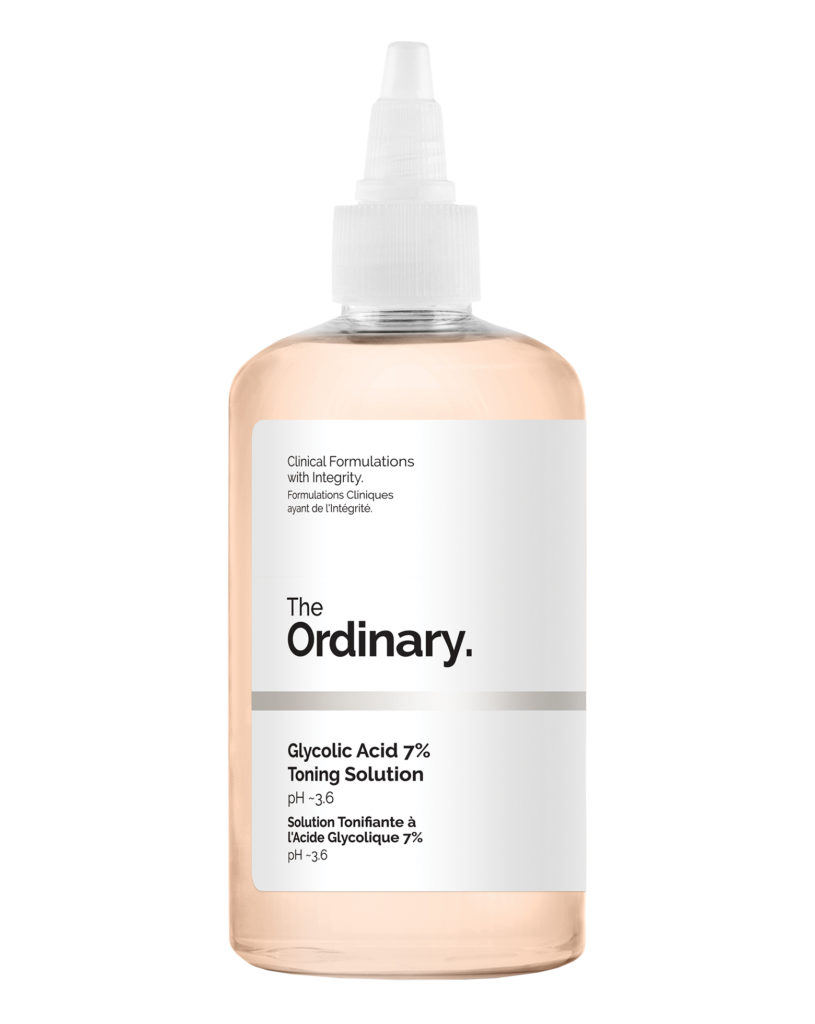GLYCOLIC ACID

Biochemistry
Glycolic acid is an alpha hydroxy acid (AHA) and is isolated most often from sugarcane, but also can be isolated from sugar beets, pineapple, cantaloupe, and unripe grapes. (1) Glycolic acid has an excellent capability to penetrate skin, and is usually found in skin care products. Once applied, glycolic acid reacts with the upper layer of the epidermis (the stratum corneum), weakening the binding properties of the lipids that hold the dead skin cells (corneocytes) together. This allows the outer skin to “dissolve” and reveals the new, unblemished underlying skin. (1)
Alpha hydroxy acids may also stimulate the growth of elastin and collagen, both of which become depleted with age. (2) This gives skin more resiliency and reduces the formation of wrinkles. Alpha hydroxyl acids can also promote dispersing of basal layer melanin. This means that glycolic acid can help to improve post-inflammatory hyperpigmentation (dark spots). (3)
Side Effects of Products with Glycolic Acid
AHA products principally have side effects of both sun sensitivity and irritation. Glycolic acid works by “burning” off the upper layer of skin, and the cells beneath the top layer are not ready to deal with sudden exposure to the damaging UV rays in sunlight. AHA products can increase your sensitivity to the sun by as much as 50%, so it’s essential that a good sunscreen (with SPF of 15 or higher) be used. (1)
Irritation is another possible side effect of AHA use. Some of these symptoms might include redness, burning and itching. If the symptoms continue after you have used the product for some time and your skin has had a chance to adapt, try using a product that contains less of the AHA concentration. (1) More serious inflammatory complications after the peel of which to be aware are urticarial eruptions or perioral dermatitis. (5) If you have any adverse reaction more than mild redness, burning or itching contact your dermatologist.
Chemical Peels with Glycolic Acid
A chemical peel is a procedure in which a topically applied wounding agent (such as Glycolic acid) creates smooth, rejuvenated skin by way of an organized repair process and exfoliation. (4) This means the outer layer of skin is damaged slightly, and this instigates the normal process of repair. Glycolic acid chemical peels usually remove skin cells to the level of the Stratum Basale of the skin. This is deeper than the Stratum Granulosum, which is the depth to which Salicylic Acid peel usually penetrates. (5) A chemical peel performed by a dermatologist in concentrations of 20%-80% (most often at 70% with a pH of 1 to 2) or at-home kits in lower concentrations of 10%. Alpha hydroxy acids seem to work best for most people in a concentration of 5% to 7%, and that’s the concentration found in most products that contain the AHAs. The pH of the treatments is also important; a pH of 4-6 is used at home. Glycolic acid chemical peels may reduce wrinkles, acne scarring, and hyperpigmentation and improve other skin conditions (such as melasma). (1)
Studies have been done on the effectiveness of superficial chemical peels, and it has been found they are most appropriate for patients with primarily comedonal acne, and work to quicken the process of comedone resolution. (5) Glycolic acid and salicylic acid (a beta hydroxy acid) are the most common agents utilized. (3) By removing that top layer of skin, the newer (healthier) skin below the acne layer can be revealed, resulting in less oily and acne-prone skin. (1)
Patients on oral retinoids should not be treated with chemical peels due to the potential for significant irritation. It is also recommended that patients on topical retinoids discontinue treatment for several days prior to treatment with chemical peels. (3) Patients with darker skin are at increased risk of post-inflammatory hypo- or hyperpigmentation (light or dark spots) and should be treated more conservatively. (3)
References:
- 1. Glycolic acid. January 2008. http://www.3dchem.com/molecules.asp?ID=414
- 2. ALPHA HYDROXY ACID (AHA). 2011. http://www.glycolicacid.com/alpha-hydroxy-acid.html
- 3. Dover, Jeffrey S. Batra, Priya. Light-based, adjunctive, and other therapies for acne vulgaris. February 11, 2011. http://www.uptodate.com/contents/light-based-adjunctive-and-other-therapies-for-acne-vulgaris?source=preview&selectedTitle=1%7E19&anchor=H6#H12
- 4. Goldstein, B. Goldstein, A. Melasma. October 31, 2008. http://www.uptodate.com/contents/melasma?source=search_result&selectedTitle=4%7E19.
- 5. Kempiak SJ, Uebelhoer N. Superficial chemical peels and microdermabrasion for acne vulgaris. Cutan Med Surg. 2008;27(3):212.


